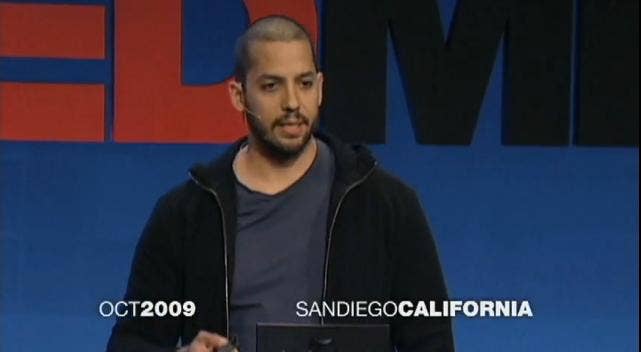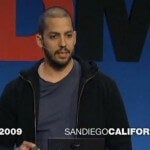TEDMED 2009 David Blaine Holds His Breath for 17 minutes (Video)

Share
I'm a big TEDMED fan, so it seems like magic that the videos of the latest conference are starting to go live on their website for free. The first video available was also a little magical, it's the presentation by David Blaine about his attempt to beat the record for holding one's breath underwater. Now, considering the serious and groundbreaking nature of most of the TEDMED presentations, I was a little disappointed that the first video available wasn't from a major scientific mind. Still, after watching all twenty minutes of Blaine's talk I was really impressed with the scale of his attempt. Officially, I'm still skeptical whether or not he really did what he said or if it was an illusion. Judge for yourself by watching the full presentation after the break.
If you don't have 20 minutes, here are some highlights followed by the video:
4:54 - Blaine discusses several possible ways to perform an illusion instead of really holding his breath. Includes a very graphic image of a re-breathing apparatus.
9:10 - Blaine claims that he dropped his heart rate to 38 bpm.
10:30 - His attempt and failure at Lincoln Center.
12:10 - Using a low-oxygen tent to raise blood cell count.
13:40 - Using magic tricks to get the attention of the New York Times and reputable Science Times coverage.
15:30 - Blaine claims that he can get his heart rate to 12 bpm while holding his breath.
16:45 - Descriptions of the effects of holding one's breath for more than ten minutes.
19:30 - Facing skepticism at the Apple Store.
Be Part of the Future
Sign up to receive top stories about groundbreaking technologies and visionary thinkers from SingularityHub.


Again, I'm not sure Blaine actually held his breath for that long (I've watched too much of Magic's Biggest Secrets Finally Revealed) but I am sure that TEDMED is a great forum for all sorts of advancements in medical technology. Sure this video is about entertainment (and maybe personal triumph) but that's probably just to get people to come to the YouTube channel. Once TEDMED hooks you with the fun talks, you'll stick around for the enlightening ones. I can't wait to see what other videos will be coming out next.
[screen capture and video credit: TEDMED]
Related Articles

Single Injection Transforms the Immune System Into a Cancer-Killing Machine

This Light-Powered AI Chip Is 100x Faster Than a Top Nvidia GPU

This Week’s Awesome Tech Stories From Around the Web (Through December 20)
What we’re reading
